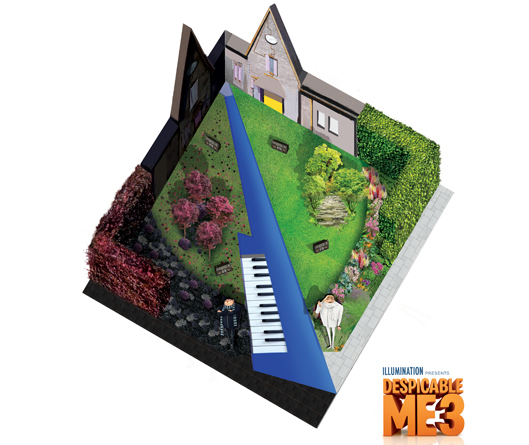![]()
Is Urban Agriculture the answer?
‘Urban agriculture’ is a phrase we’re hearing a lot recently, alongside ‘Community Assisted Agriculture’ and ‘Food Security’, but have you ever thought about what they mean?
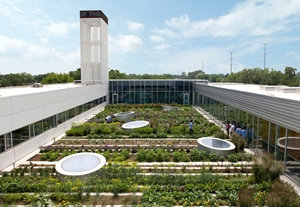
As a rural dweller I can’t say I’d spent too much time thinking about urban agriculture in particular, so attending a recent Urban Agriculture conference at NUI Maynouth was quite an eye opener.
When Professor Yokohari took to the stage and began to share stories about the disasters his country has suffered throughout the centuries, including earthquakes, fires and tsunamis, some of which have razed Japanese cities to the ground, all of a sudden urban agriculture begins to make complete sense.
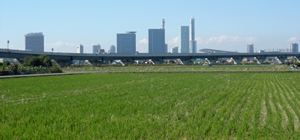
Natural climate disasters of that magnitude aren’t anything we’ve had to contend with on our little island. We don’t live on land that’s perched on top of earthquake hotspots, mountains prone to landslides or volcanic eruptions that spew lava and ash for miles around. We’ve therefore never had to think much about what we’d do if we were suddenly without an infrastructure. Over the centuries we’ve got off lightly and I consider myself very lucky to be living where I do.
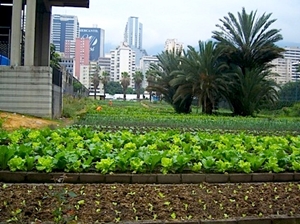
However, with the temperatures on the planet warming and climate change stirring up the global pot, not only are weather patterns already changing, there’s talk of sea levels rising more significantly than we first thought.
I recently read that if the Western Atlantic ice sheet collapses faster than was first predicted, sea levels may rise by as much as seven metres within the next 100 years (when many of us would expect to have grandchildren alive). That’s an unprecedented amount of flooding for our future generations to cope with and as a parent, a scenario I’d rather not think about. We can’t ignore the fact that the climate is changing, that more extreme weather events are occurring, that the ice sheets and glaciers are melting faster than we’d like and that unless scientists have got their predictions way, way off the mark, they’re going to continue to do so.
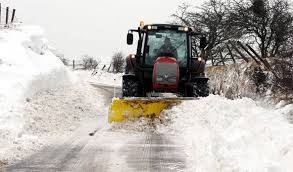
When the cold winter of 2010/11 hit Ireland, in less than a week supermarket shelves were looking bare as planes were unable to land on runways and roads were closed, leaving lorry loads of groceries unable to reach out-of-town stores. Thankfully the cold snap didn’t last long but imagine for a minute if it had….
How would we cope if suddenly all the roads and rail lines coming out of Dublin were gone? Just one large natural or man made disaster could leave us without our basic provisions within a very short period of time. 75% of Ireland’s glasshouse crops and 50% of our national vegetable output are grown in Fingal, North Dublin – that would leave many communities around the country hungry if the food was unable to be transported to them.
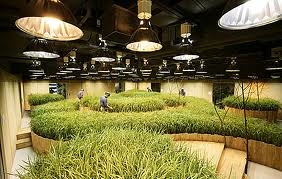
It alarms me that we’re so unprepared to fend for ourselves, that we live such unsustainable lives, but then we’ve never had to behave any differently.
So what is urban agriculture and what can we learn from the Japanese?
In Tokyo 1.5% of agriculture still exists within the city. In areas that we normally associate with finance and retail, business and inner city living there are 6,500 farming households, each farming on average just 0.14 ha. Rice and brassica fields are planted between skyscrapers and rooftop allotments have long waiting lists. But these aren’t just unpaid hobby farmers, many charge for their produce and are now known as semi professional farmers; a large percentage of them are over the age of retirement. Professor Yokohari’s research shows that urban hobby farmers are producing 9.1kg/m2/year whilst professional farmers harvest 6.2 kg/m2/year – they’re not figures to be dismissed lightly.
Most western town and city planners don’t allow for crops to be grown within their confines. In the densely populated cities of Japan however, food crops are sprouting in fertile land all around. People are not only earning a living farming in their cities, they also know that if disaster strikes elsewhere in their country, they can fend for themselves until infrastructures are repaired – they are unlikely to go hungry.
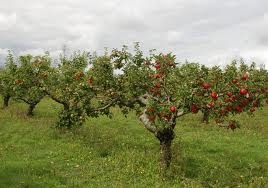
Back home in Ireland
Given that grow your own, allotments and community gardening are still a hobby for the minorities, we can’t expect miracles but we can do something that will begin to introduce communities to more sustainable ways of thinking.
Instead of walking past an overgrown eyesore, imagine popping into a community orchard and picking your own apples, pears or plums off the trees.
Creating a community orchard would be a simple step in sustainability and in all likelihood would attract grants or donations as well as volunteers to help plant the trees. If every household in a neighbourhood committed to buying and planting just one tree, the size of the orchard would only be limited by space.
It’s not a new idea, urban orchards have been planted in several cities, but it works. Okay, we can’t all live off apples but it would be a start and we all know that planting trees is great for the environment so it’s a win win all around. From an orchard might come a community harvest, then community pressing and juicing and perhaps preserving or cider making. We might celebrate our efforts by sharing food and perhaps a dance and from there more ideas might spawn as we realise how much we can achieve when we work together and support one another.
Some might argue that the simple act of planting an orchard is too little, we need to do more, faster, but without the experiences the Japanese have faced, we don’t feel that sense of urgency. It takes years and a different mindset to create a culture of growth like they’ve done. It takes years for a tree to reach maturity.
Isn’t it time we stopped thinking about ourselves and cast our minds to the future? Our day-to-day worries and concerns can’t be ignored, they’re real and they’re now and many of us are struggling to survive economic hardships. However, the warnings about our heating globe are becoming more urgent. We need to get our heads out of the sand and start thinking about our future generations, our children and theirs.
It’s time we stopped ignoring the warnings and started to plant the seeds of change.
If you’d like help or advice on planting an orchard, contact me here and I’ll do my best to help you or put you in touch with somebody who can.

Dee Sewell – a horticulturalist and certified trainer who started Greenside Up in 2009 and teaches people how to grow vegetables. Dee specialises in working with community gardens but also offers workshops, allotment visits, consultations, horticultural therapy, afterschools clubs as well as local talks – she tailors her services to meet clients needs. In 2012 Dee launched a Seed Gift Collection containing varieties of vegetable and insect friendly flowers with the aim of getting more people growing. Dee’s blog was a finalist in the 2012 Ireland Blog Awards in the Eco/Green and Lifestyle Categories.
Source: GreenSideUp – Urban Agriculture ~ Can We Learn From the Japanese? – Dee Sewell


